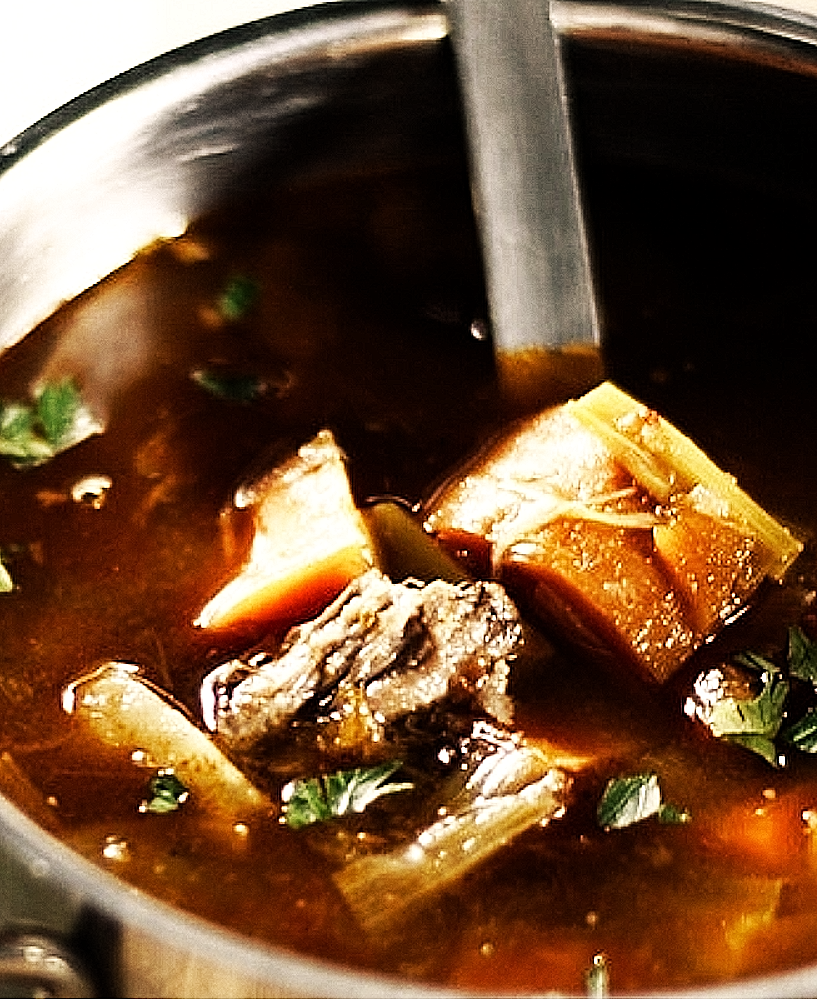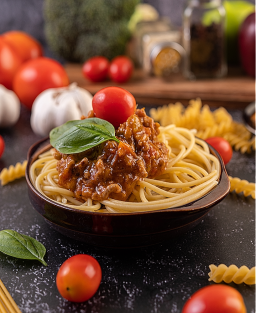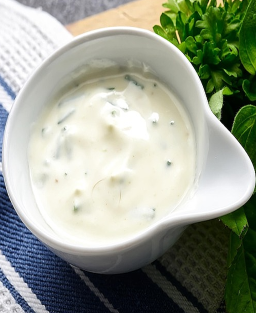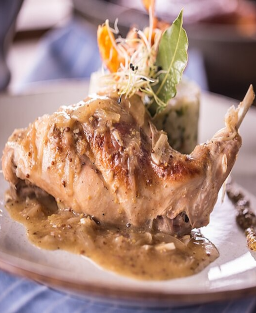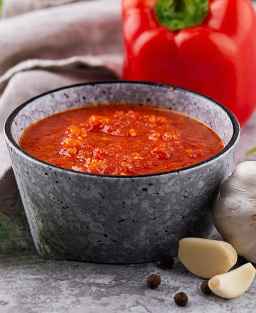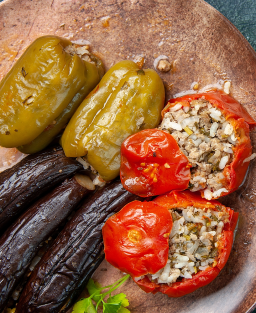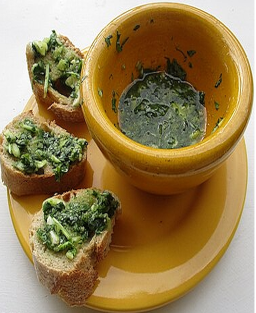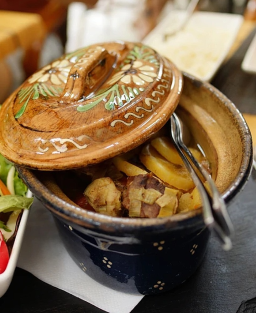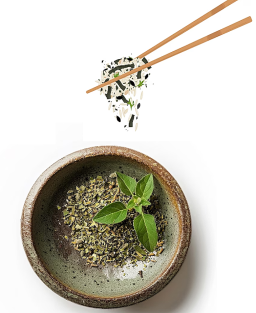- Out-of-Stock
Veal or Beef Tail Broth with Pork Rind and Aromatics
Veal or Beef Tail Broth with Pork Rind and Aromatics
Ingredients:
-
Veal tail or beef tail: 1, cut into pieces
-
Pork rind: 250 g (blanched)
-
Onions: 2, quartered
-
Carrots: 2, cut into pieces
-
Celery stalk: 1, cut into pieces
-
Garlic cloves: 3, crushed
-
Bouquet garni: 1 (thyme, bay leaf, parsley)
-
Black peppercorns: 1 teaspoon
-
Cloves: 2 (optional)
-
Cold water: 3 liters
Preparation and cooking:
-
Place the tail (veal or beef) in a large pot with cold water.
-
Bring to a gentle simmer, then carefully skim off impurities that rise to the surface.
-
Add onions, carrots, celery, garlic, bouquet garni, peppercorns, and cloves.
-
Let simmer:
-
For veal tail: 3 to 4 hours
-
For beef tail: 5 to 6 hours, or up to 8 hours for a very rich broth
-
-
After 1 to 2 hours of cooking, add the blanched pork rind.
Why add pork rind during cooking?
Pork rind contains very soluble collagen that releases quickly into the broth. If added at the start, it can overload the broth with fat and cloud the liquid. Adding it after 1 to 2 hours allows its gelling properties to enrich the broth without compromising its clarity and balance.
Tips:
-
Do not salt during cooking to avoid excessive concentration if the broth is reduced later.
-
Maintain a gentle simmer, avoid boiling hard which clouds the broth.
-
Skim regularly to keep the broth clear.
Veal or Beef Tail Broth with Pork Rind and Aromatics
Broth made from veal or beef tail, enriched with pork rind, is a rustic and flavorful preparation, perfect for enhancing traditional dishes such as cassoulet, stews, hearty soups, or rich sauces. Its high collagen content gives it a silky texture while adding depth and structure to culinary preparations.
Origin and Tradition
This type of broth has roots in French peasant cuisine, where so-called “lower cuts” are valued: tails, bones, cartilage, and rind. These parts, rich in connective tissue, contribute both flavor and body.
It is particularly representative of the culinary traditions of Southwest France, a region with a strong livestock industry, especially pig farming. In these rural areas, broths serve as the base for slow-cooked dishes, nourishing soups, and aspic preparations.
Regional Anchoring: Southwest France
In this region, several iconic recipes include tail and rind broths:
-
Cassoulet: In Castelnaudary, Carcassonne, or Toulouse, white beans are cooked in a broth made from tail (veal or beef), pork rind, and bones. This broth acts as a natural binder and adds a melting texture. In some versions, whole pieces of rind are placed at the bottom of the dish.
-
Garbure: This peasant soup, made with cabbage, root vegetables, duck confit or shank, owes its richness to a collagen-rich broth that gives it a characteristic velvety texture.
-
Rustic terrines and aspics: In the countryside of Gascony and Béarn, broths made from heads, tails, and rind are reduced and molded with meats such as ears, feet, or snouts. This produces aspics and head cheese, served cold with vinegar and condiments.
This tradition stems from several factors: a strong livestock culture, a frugal cuisine attentive to using offal and lesser cuts, and rural living conditions that required hearty, slow-cooked dishes.
Veal Tail or Beef Tail: Two Profiles, Two Uses
-
Veal tail: Produces a clearer, more delicate broth with a fine, silky texture. The collagen is lighter and releases quickly. This broth suits white sauces, refined consommés, and light aspics.
-
Beef tail: Yields a richer, more structured broth with marked aromatic depth. Its collagen is denser and fibers more resistant. Ideal for stews, brown sauces, reduced stocks, and concentrated jus.
Pork Rind: A Natural Gelling Agent
Pork rind, blanched before use, releases very soluble collagen that contributes to the broth’s texture without altering flavor. It is commonly used to:
-
stabilize broths after cooling,
-
thicken stocks,
-
prepare aspics or reductions,
-
give firmness to terrines.
Recommended Cooking Times
| Ingredient | Cooking Time | Desired Result |
|---|---|---|
| Veal tail | 3 to 4 hours simmering | Clear, delicate, and gelatinous broth |
| Beef tail | 5 to 6 hours (up to 8 h) | Full-bodied, rich, structured broth |
| Pork rind | 2 to 3 hours | Rapid collagen extraction, bound texture |
Culinary Uses
This type of broth is an extremely versatile base in traditional cooking:
-
slow-cooked dishes (cassoulet, potée, daube),
-
soups with legumes or cabbage,
-
cooking stocks for meats, shanks, terrines, offal,
-
thick sauces, both brown and white,
-
aspics, gelatin, consommés (clarified versions).











